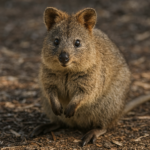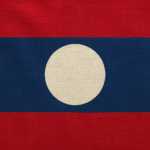
Kookaburras are fascinating birds native to Australia, known for their distinctive laugh-like call and striking appearance. As members of the kingfisher family, these birds are not only a delight to observe in the wild but also hold significant cultural importance in Australian heritage. With unique behaviors, such as cooperative breeding and sound mimicry, kookaburras capture the interest of birdwatchers and nature enthusiasts alike. Here are some intriguing facts that highlight their remarkable characteristics and role in the ecosystem.
Species: Kookaburras belong to the genus Dacelo, which includes four distinct species. The most recognized species is the Laughing Kookaburra (Dacelo novaeguineae), known for its iconic call that resembles human laughter. The other three species include the Blue-winged Kookaburra (Dacelo leachii), the Rufous-bellied Kookaburra (Dacelo gaudichaud), and the Spangled Kookaburra (Dacelo tyro). Each species has unique characteristics and habitats, but all share the common trait of being large, robust birds with strong beaks adapted for hunting.
Size: The Laughing Kookaburra measures between 28 to 42 cm (11 to 17 inches) in length, making it one of the largest members of the kingfisher family. Its size, combined with its distinctive coloration and vocalizations, makes it easily recognizable. The bird’s robust body is complemented by a large head and a long tail, which aids in its balance and agility when perched on branches or swooping down to catch prey.
Weight: Adult kookaburras typically weigh between 0.5 to 1.2 kg (1.1 to 2.6 lbs). This weight range can vary slightly based on factors such as diet, age, and environmental conditions. Their weight contributes to their powerful flight and ability to hunt larger prey compared to smaller birds. The substantial body mass also helps them maintain stability when perched on branches or during territorial displays.
Lifespan: In the wild, kookaburras can live up to 15 years, with some individuals reported to live longer in captivity, sometimes exceeding 20 years. Their lifespan can be influenced by factors such as habitat quality, availability of food, and predation. In captivity, where they are protected from predators and provided with consistent food sources, kookaburras often thrive and can reach their maximum age potential.
Habitat: Kookaburras are native to Australia and New Guinea, thriving in diverse environments such as woodlands, forests, and even suburban areas. They prefer habitats that offer a mix of open spaces for hunting and trees for nesting and perching. Their adaptability allows them to coexist with human populations, often seen in parks and gardens, where they find ample food sources.
Diet: Kookaburras are carnivorous birds primarily feeding on insects, small reptiles, and small mammals. Their diet can include grasshoppers, crickets, and even snakes. They are skilled hunters, often using a sit-and-wait strategy, where they perch silently and observe their surroundings before launching to catch unsuspecting prey. This hunting technique, combined with their strong beaks, makes them effective predators in their ecosystem.
Social Structure: Kookaburras are known for their social behavior, often forming family groups that can include up to 10 individuals. These groups consist of a breeding pair and their offspring from previous years, who assist in raising younger siblings. This cooperative breeding strategy enhances the survival rate of the young and allows the family to defend their territory more effectively against intruders.
Breeding Season: The breeding season for kookaburras typically occurs from August to January, coinciding with the warmer months in Australia. During this time, males engage in courtship displays, which include vocalizations and physical displays to attract females. Nesting usually takes place in tree hollows, where the female lays a clutch of 2 to 4 eggs. Both parents share incubation duties, which lasts about 24 days.
Eggs: A typical clutch of kookaburra eggs consists of 2 to 4 eggs, which are usually white and oval-shaped. The eggs are incubated for approximately 24 days, during which both parents take turns keeping the eggs warm. After hatching, the chicks are altricial, meaning they are born helpless and rely on their parents for food and protection. The parents and older siblings work together to feed the young, ensuring their survival during the critical early weeks.
Fledging: Young kookaburras typically fledge around 4 to 5 weeks after hatching, at which point they begin to develop their flight feathers and learn to fly. However, fledging does not mean independence; young kookaburras often remain with their parents for several months, learning essential survival skills such as hunting and territory defense. This extended parental care is crucial for their development and increases their chances of survival in the wild.
Vocalization: The Laughing Kookaburra is renowned for its distinctive call, which resembles hearty laughter and can be heard up to 3 km (1.9 miles) away. This vocalization serves multiple purposes, including marking territory, communicating with family members, and attracting mates. The call is typically performed in a series of loud, raucous sounds and can be initiated by one bird, with others joining in, creating a chorus that reinforces their presence in the area.
Conservation Status: The Laughing Kookaburra is classified as Least Concern by the International Union for Conservation of Nature (IUCN), indicating a stable population across its native range. This status reflects their adaptability to various habitats, including urban environments. However, habitat destruction and changes in land use can pose threats to local populations, making ongoing monitoring and conservation efforts essential to ensure their continued presence in the wild.
Cultural Significance: Kookaburras hold a prominent place in Australian folklore and culture, often symbolizing the spirit of the Australian bush. They are featured in various Indigenous stories and are associated with the natural landscape of Australia. Their laughter-like call has become emblematic of the Australian wilderness, and kookaburras are frequently depicted in art, literature, and even as mascots, reflecting their status as a beloved national symbol.
Flight: Kookaburras have a wingspan of approximately 65 to 75 cm (25 to 30 inches), which aids in their ability to soar and glide while hunting. Their strong, broad wings allow them to cover considerable distances in search of food and provide stability during flight. Kookaburras are not only capable of rapid, direct flight but can also maneuver skillfully through trees and brush, making them effective hunters in their natural habitats.
Record Size: The largest kookaburra species is the Blue-winged Kookaburra (Dacelo leachii), which can reach sizes similar to the Laughing Kookaburra. This species is notable for its striking blue wing feathers and is primarily found in northern Australia and New Guinea. The Blue-winged Kookaburra’s size and distinctive coloration help it stand out in its environment, and like its relatives, it exhibits similar behaviors and hunting techniques.
Migration: Kookaburras are generally sedentary birds and do not migrate long distances. However, they may move locally in search of food or during periods of drought when resources become scarce. Their strong territorial instincts mean that they often remain within a defined area, defending their territory from other kookaburras and ensuring access to food sources. This behavior contributes to their stability in populations across their range.
Predators: Natural predators of kookaburras include larger birds of prey, such as eagles and hawks, as well as snakes. While kookaburras are skilled hunters themselves, they must remain vigilant to avoid becoming prey. Their size and strong beaks provide some defense, but they rely on their agility and ability to take flight quickly to escape threats. Nesting in tree hollows also offers protection from some ground-based predators.
Coloration: The plumage of kookaburras is predominantly brown and white, with distinctive blue markings on the wings, particularly evident in the Blue-winged Kookaburra. This coloration serves as camouflage in their natural habitats, helping them blend into the trees and foliage. The contrast between the browns and blues enhances their visual appeal and plays a role in social interactions, as brighter colors may attract mates.
Behavior: Kookaburras are known for their unique hunting technique, which often involves sitting quietly on a perch, surveying the ground for movement. Once they spot potential prey, they swoop down with remarkable speed and precision to capture it. This method allows them to conserve energy while maximizing their hunting success. They are also known to cache food, storing excess prey in tree crevices for later consumption.
Group Behavior: In family groups, younger kookaburras play an active role in feeding their siblings, showcasing a unique behavior among birds. This cooperative breeding strategy enhances the survival of the young, as older siblings help to provide food and protection. The social dynamics within these groups are complex, with established hierarchies that dictate roles in hunting and caring for the young, ultimately benefiting the entire family unit.
Record Lifespan: The kookaburra, a member of the kingfisher family, is known for its impressive lifespan, particularly in captivity. The oldest recorded kookaburra lived to be 20 years old, which is relatively long for a bird of its size. In the wild, their lifespan is typically shorter due to factors such as predation, food availability, and environmental conditions. This longevity in captivity can often be attributed to consistent food supply, absence of predators, and veterinary care, allowing these birds to thrive in a controlled environment.
Sound Mimicry: Kookaburras are renowned for their distinctive call, which resembles a loud, echoing laugh. This characteristic sound is not only a form of communication among kookaburras but also serves as a territorial marker. Interestingly, kookaburras are adept at sound mimicry, capable of imitating other bird calls and various sounds from their environment. This ability can help them blend into their surroundings or deceive potential threats and rivals. Their vocalizations are often heard at dawn and dusk, adding to the unique auditory landscape of the Australian bush.
Caring for Young: Kookaburras exhibit fascinating social behaviors, particularly in their approach to raising offspring. Both parents are actively involved in nurturing their young, and they are often assisted by older siblings from previous broods. This cooperative breeding strategy enhances the survival rate of the chicks, as multiple caregivers can provide food and protection. The young kookaburras remain with their parents for an extended period, learning essential skills and behaviors before venturing out on their own. This familial structure is a testament to their strong social bonds and communal living.
Common Name Origin: The name “kookaburra” has its roots in the Wiradjuri language, which is spoken by Indigenous Australians. The term reflects the cultural significance of the bird to the Aboriginal people, who have long recognized the kookaburra as a symbol of the Australian landscape. The name itself is derived from the word “guuguubarra,” which refers to the bird’s distinctive call. This connection highlights the importance of the kookaburra in Australian culture and its role in the ecosystem, as well as the rich linguistic heritage of Indigenous communities.
Notable Appearance: Kookaburras are not only known for their vocalizations but also for their striking appearance. With their large heads, stout bodies, and distinctive blue and white plumage, they are often depicted in Australian art and literature. Their image symbolizes the unique wildlife of Australia and is celebrated in various forms of media, including paintings, stories, and songs. Kookaburras have become icons of the Australian bush, representing the diverse and vibrant ecosystem of the continent. Their presence in art reflects the deep connection between the Australian people and their natural environment.
Frequently Asked Questions About Kookaburras
General Questions
1. What is a kookaburra?
- A kookaburra is a large bird native to Australia and New Guinea, known for its loud, laughing call. They belong to the family Dacelo, which is in the order Coraciiformes.
2. Where do kookaburras live?
- Kookaburras are primarily found in Australia, with some species also inhabiting parts of New Guinea. They prefer habitats with trees and open spaces, such as woodlands, forests, and backyards.
3. What do kookaburras eat?
- Kookaburras are carnivorous and primarily feed on insects, small reptiles, amphibians, and birds. They are also known to scavenge for food, such as scraps left behind by humans or other animals.
4. How big are kookaburras?
- Kookaburras vary in size depending on the species, but most are around 25-45 centimeters (10-18 inches) long. The largest species is the laughing kookaburra, which can reach a length of up to 50 centimeters (20 inches).
5. What is the significance of the kookaburra’s laugh?
- The kookaburra’s laugh is a distinctive feature that has made it a popular symbol of Australia. It is believed that the laugh serves various purposes, including attracting mates, defending territory, and warning off predators.
Specific Questions
1. What is the difference between a laughing kookaburra and a sacred kingfisher?
- Both the laughing kookaburra and the sacred kingfisher are members of the Dacelo genus, but they have some distinct differences. The laughing kookaburra is larger and has a more prominent crest, while the sacred kingfisher is smaller and has a shorter crest. Additionally, the sacred kingfisher is often found in more humid and forested areas compared to the laughing kookaburra, which prefers drier habitats.
2. Can kookaburras be kept as pets?
- While it is possible to keep kookaburras as pets in some regions, it is generally not recommended. Kookaburras are wild animals and require specialized care, including a large enclosure and a diet that consists primarily of live prey. Additionally, their loud calls can be disruptive to neighbors.
3. Do kookaburras pose a threat to humans?
- Kookaburras are generally not aggressive towards humans, but they can be territorial and may attack if they feel threatened. It is important to treat them with respect and avoid approaching their nests or young.
4. How long do kookaburras live?
- In the wild, kookaburras can live for up to 15 years. However, their lifespan can be shorter in captivity due to factors such as stress and improper care.
5. Are kookaburras protected species?
- Kookaburras are not considered endangered or threatened species, but they are protected by Australian wildlife conservation laws. It is illegal to harm or kill a kookaburra without a permit.








